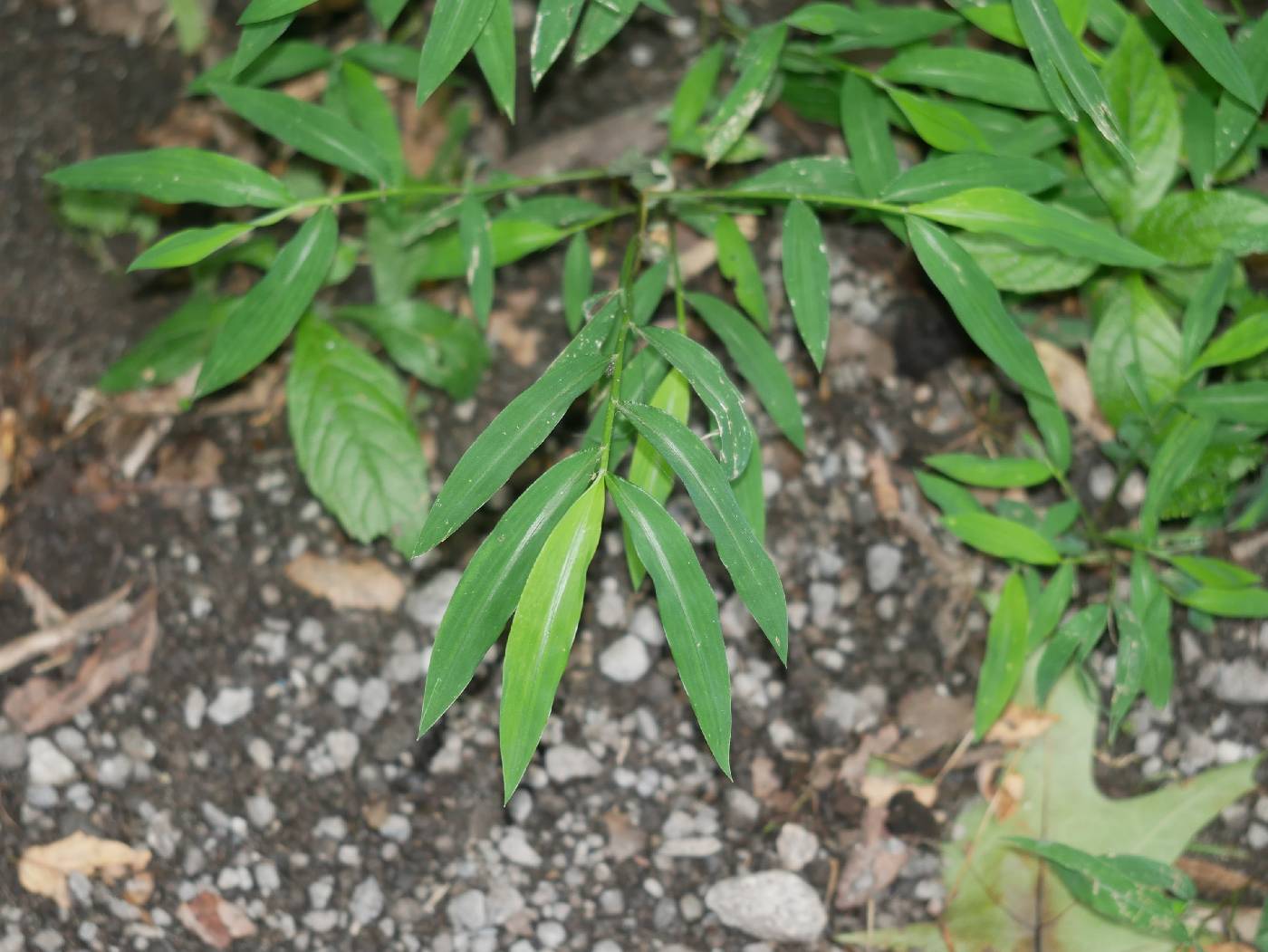Microstegium
|
Family: Poaceae |
Plants annual or perennial; straggling. Culms to 100 cm, often decumbent. Leaves not aromatic; ligules membranous; blades narrowly-elliptic to lanceolate, often pseudopetiolate. Inflorescences terminal, subdigitate to racemose clusters of 1-few rames; rame internodes slender, without a translucent longitudinal groove; disarticulation in the rames beneath the sessile spikelets, and below the pedicellate spikelets. Spikelets in homogamous, homomorphic, sessile-pedicellate pairs, with 1 or 2 florets. Lower glumes herbaceous to cartilaginous, longitudinally grooved, margins inflexed, 4-6-veined, usually keeled; upper glumes 3-veined, mucronate or shortly awned; lower florets absent, or reduced and sterile; upper florets bisexual; upper lemmas usually awned; anthers (2)3. x = 10. Pedicels not fused to the rame axes. Name from the Greek micros, small, and stege, cover, possibly alluding to small glumes. Spikelets all alike, paired, one sessile, the other pediceled, both eventually deciduous; rachis of the racemes articulate; glumes equal, the lower one flat, 2-3-veined, the upper one keeled and 3-veined; lemmas 2, hyaline, the lower one sterile, the fertile one often awned. (Eulalia, in part) 30, warmer parts of the Old World. Gleason, Henry A. & Cronquist, Arthur J. 1991. Manual of vascular plants of northeastern United States and adjacent Canada. lxxv + 910 pp. ©The New York Botanical Garden. All rights reserved. Used by permission. |

